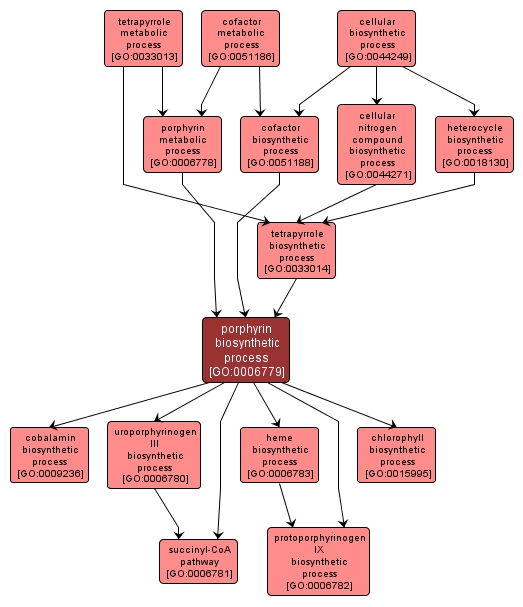GO TERM SUMMARY
|
| Name: |
porphyrin biosynthetic process |
| Acc: |
GO:0006779 |
| Aspect: |
Biological Process |
| Desc: |
The chemical reactions and pathways resulting in the formation of any member of a large group of derivatives or analogs of porphyrin. Porphyrin consists of a ring of four pyrrole nuclei linked each to the next at their alpha positions through a methine group. |
Synonyms:
- porphyrin anabolism
- porphyrin formation
- porphyrin biosynthesis
- porphyrin synthesis
|














